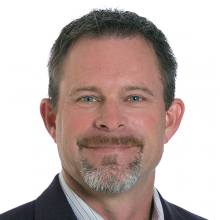When Scott Terrell took on the CIO role at HealthMarkets in 2014, a key goal was to evolve the CIO role beyond technology and become a key member of the executive team. The challenge gave Terrell and his IT team an opportunity to have a direct, positive impact on the success of the business. Since then, Terrell has helped transform the HealthMarkets’ IT organization from order takers and a cost center to “a key asset that is pivotal in helping our businesses meet their financial and productivity goals,” he said.
[ See our related research: Revenue-Generating CIOs: Smart Strategies to Grow the Business. ]
For his efforts, Terrell recently received the Corporate Dallas CIO of the Year Award from the Dallas CIO Leadership Association. In this interview, Terrell shares examples of how his IT organization worked in the trenches to improve productivity for HealthMarkets’ clients, ultimately reshaping IT’s role in the company.
The Enterprisers Project (TEP): Many IT organizations are being tasked with taking on revenue-generating projects, often these involve creating new products. In your case, you helped generate revenue by achieving efficiencies through technology. Can you give a brief overview of how your IT organization came to realize this would be an opportunity that could pay off?

Terrell: HealthMarkets agents across the country are exceptional at selling products to strengthen the financial well-being of our clients. These agents range from decades of experience to just a few months, so our technology suite must improve productivity for a broad range of agent industry experience, geographic location, over and under 65 markets, and various lines of business. Given that diversity, our IT organization had to shadow these agents to experience the selling process first-hand, meet with both experienced and new agents across a variety of geographic markets, and research other industries that have similar selling methods.
This intelligence was key to the initial launch of our technology in the individual health market and replicating the success across other lines of business including the senior market, life, and voluntary products. The end result is that we have improved agent productivity 27 percent just in the last year despite significant turbulence in the health insurance industry.
TEP: Your company has shown impressive revenue growth through technology efficiencies your IT organization helped implement. Implementing the systems is a big feat – getting the sales organization to use them is another. How did you get reps to adopt these new tools?
Terrell: An IT organization fails when it creates technology that is not used or does not meet the objective. Unfortunately, the health insurance industry is not the “field of dreams” – it does not follow the “if you build it, they will come” mentality. We knew that we could not meet our corporate growth objectives simply by adding more agents; we had to significantly improve the productivity of each individual agent and team. Our initial step was to shadow key agents in the selling process, then interview them to understand their needs when selling. Including these agents in the development of our tools created a sense of ownership and excitement that they were part of the process.
We have continued this interaction with the agents and iterative development from the beginning to ensure we are on point with our enhancements. These key agents, along with their sales and territory leaders, have served as technology champions, and they are a key reason we have high utilization of our technology suite.
TEP: Key to your transformation was the strong partnerships between you and your peers in the C-Suite. Can you talk a little bit about how you forged those relationships? What have you found to have been successful to allow for cross-functional collaboration between different teams in your organization?
Terrell: As CIO, I am involved in strategy and operations meetings with other business executives – with my thoughts and feedback solicited on a consistent basis. I am directly involved in annual business objectives for each of our businesses and challenged to build productivity and efficiency into the core of each business.
Achieving this involvement was not automatic; I had to prove that my organization and I were truly interested and focused on success of the business. Not only did I need to learn the detailed operations of each business, but I also needed to get to know each of my peers on a personal basis to begin building the trust that is required for any successful partnership. Once we began to prove that we could deliver on our commitments, the level of confidence with the organization began to grow, and the partnership was strengthened.
A key learning for me through this process is that a CIO and IT organization must not limit themselves to strictly technology, we must also get to know the businesses we support exceptionally well so we can provide sound input on strategy and direction.
[ Want to give your team a greater sense of urgency? Get our new resource: Fast Start Guide: Creating a sense of urgency, with John Kotter. ]





